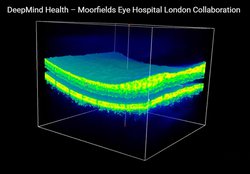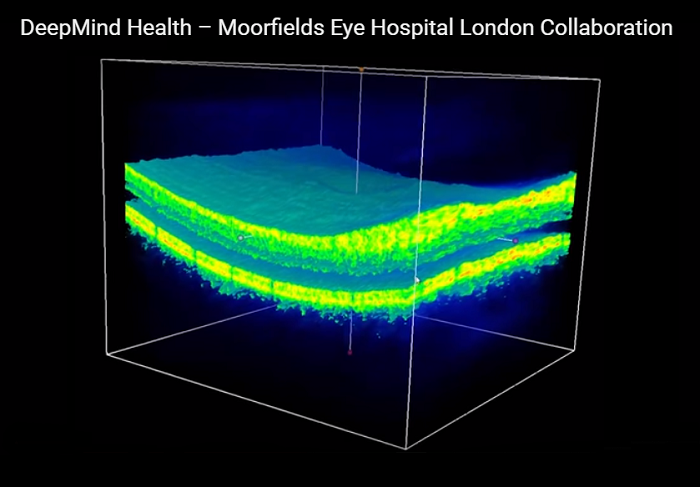
July 5, 2016
By: Michael Feldman
For the first time, Google’s DeepMind machine learning technology is being used in a medical research application, in this case, for the detection of two of the most common eye diseases: diabetic retinopathy and age-related macular degeneration (AMD). If the software is as successful in this endeavor as it was with AlphaGo, the DeepMind-powered application that vanquished Go champions Fan Hui and Lee Sedol, ophthalmology may never be the same.
The research project revolves around passing digital eye scans through DeepMind’s training algorithms to build a model that can detect the presence of these disorders in the early stages. The eye scan data is courtesy of London’s Moorfield Eye Hospital, an institution that is funded by UK’s National Health Service (NHS). Moorfield is suppling DeepMind with a million or more anonymous digital eye scans it has collected as part of its own research and clinical work. These scans will be used to train the algorithms, which will subsequently be applied to data of new patients.

The anonymous nature of the data was a prerequisite, given that Google and the NHS have run into trouble in this area before when patient data was shared without clear consent. The project is currently scheduled to last five years, after which, all copies of the data DeepMind received through the collaboration will be destroyed.
Anonymity aside, the eventual goal is to detect eye disease in actual consenting patients, such that effective treatments can be applied. According to studies done in the UK, 98 percent of severe vision loss resulting from diabetic retinopathy can be prevented with early detection and treatment. Likewise, if AMD can be detected before it has progressed to the more serious “wet” form of the disease, treatment can slow its advance significantly.
Assuming the project is successful, the advantages of machine learning for such work would be significant. First and foremost, it would lessen diagnostic costs by replacing expensive human labor with cheap computing. Many hospitals are hard-pressed to provide timely diagnosis, given the amount of data involved. At Moorfields, for example, more than 3,000 eyes scans are performed every week, each one requiring a trained clinician to evaluate. By employing a machine learning platform, diagnostic screening could be done in near real-time.
In addition, detecting eye disease algorithmically may turn out to be more accurate than that of a human, and be able to detect a problem before it would be apparent to a clinician. If that turns out to be the case, secondary cost savings would accrue from the benefits of early disease intervention, avoiding the extra money that would be spent dealing with serious vision loss or blindness. Today, for example, the best image recognition models using deep neural networks outperform that of even the most skilled experts.
"Our research with DeepMind has the potential to revolutionize the way professionals carry out eye tests and could lead to earlier detection and treatment of common eye diseases such as age-related macular degeneration,” said Professor Sir Peng Tee Khaw, Director of the National Institute for Health Research Specialist Biomedical Research Centre in Ophthalmology at Moorfields Eye Hospital NHS Foundation Trust and UCL Institute of Ophthalmology. "With sight loss predicted to double by the year 2050 it is vital we explore the use of cutting-edge technology to prevent eye disease."
